From annual galas and conferences to award ceremonies and community picnics, your nonprofit’s website should be a crucial part of selling tickets or filling seats. Event landing pages serve as the central hub for your marketing efforts: giving attendees the information they need while giving you a place to link to when promoting the event in emails, social media, ads and more.
But what does a landing page need to have on it? Where should it be placed within your existing website structure? And what do you do with it when the event is over?
Dive into our recommendations for event landing pages that will help your shindig shine.
Event Landing Page Best Practices
Much like standard best practices for landing pages, an event landing page has several key elements that motivate visitors to take action, like register to attend, purchase tickets or become a sponsor.
Comprehensive and direct
The page should include enough information for someone to make a buying decision in the moment without any question about the value and nature of the event. Default to offering a straightforward description rather than trying to be splashy or sticking hard to a theme.
Don’t tie up text in graphics
It’s not helpful (or accessible) to put crucial event information in text within an image or graphic. Don’t just paste a JPG of your invite on the page! The image likely won’t be very readable on smaller screens and certainly won’t be readable for people using assistive devices or even for search engines. Use images to complement your copy, not to replace it.
Strong and urgent call to action
Remember that a landing page is the first step, not the final destination. If you’re going to the effort of getting people there, make sure you have one call to action that’s obvious and can be completed right away. Even if event registration isn’t open yet, is there a schedule that could be downloaded or an email list they can join for event updates?
Simple next steps
Follow up on your call to action with a conversion process that’s easy for visitors to identify and complete. Online forms should be as short as possible. Ideally, any transaction would happen directly on your website through a payment processor rather than sending people away from your website to finish up.
Landing Page Management
You want to be strategic anytime you’re adding a new page to your nonprofit’s website. Thinking beyond the content of the page, it’s important to consider the location within your website structure, page name and URL, and what you’re going to do with the page when the event is over.
Placing the page within your site
If your site has a built-in event management system (which has a lot of perks), your event landing page will likely exist within that area of your website. Otherwise, place the landing page within a section of the site where you talk about other events or ways to get involved. In most cases, it’s best for users to group similar content together rather than have a bunch of orphaned pages without a home in your structure.
Page name and URL
If your organization throws the same event every year, do yourself a favor and create a landing page that you can repurpose in perpetuity. Keep the page name as basic as possible and leave out the year. For example, a landing page URL that ends with /annual-gala can be used again and again unlike /annual-gala-2019.
If you end up with a long URL that doesn’t look great in your promotional materials, consider using a service like Bitly to shorten them.
When to publish the page
There’s no hard rule for when your event landing page should be live on the website. Aim to have it ready and waiting as a draft at least one week prior to when you want to start promoting the event. Publish it and verify that everything is working correctly at least 1 day before you include the link in any materials, including printed collateral.
Post-event page update
Step away from the delete button. Once the event is over, update the landing page with a message of thanks and a recap of its success with photos or videos. For annual events, you can keep this post-event update in place until you’re ready for next time. Add next year’s date/location for people to mark their calendars once you know it.
For one-time events, consider adding in a call to action asking people to support you in another way if they missed all the fun.
Event Content Ideas
When you’re ready to pull together content for your event landing page, consider the following types of information. You’d be surprised at the number of organizations that leave off a street address or important deadline!
- Your event name
- Event date and time
- Location address and map
- Short event description
- Brief organization and mission overview
- Contact information
- Event schedule and happenings
- List of selling points or special features
- Biographies of featured guests
- Testimonials from past attendees or beneficiaries
- Links to related event blog posts
- Past event photos or videos
- Pricing information
- Registration/purchasing information
- RSVP or registration deadlines
- Amount of availability/tickets remaining
- List of sponsors
- Sponsorship information
- Frequently asked questions
- Event policies, like refunds or photo consent
Event Landing Page Examples
Ready for some event landing page design inspiration? Check out these examples to see best practices and great content in action.
Rainforest Alliance’s Annual Gala
Starting with a simple introduction, this page packs in a video, table pricing, contact information, links to past events, and details for the 2020 gathering.
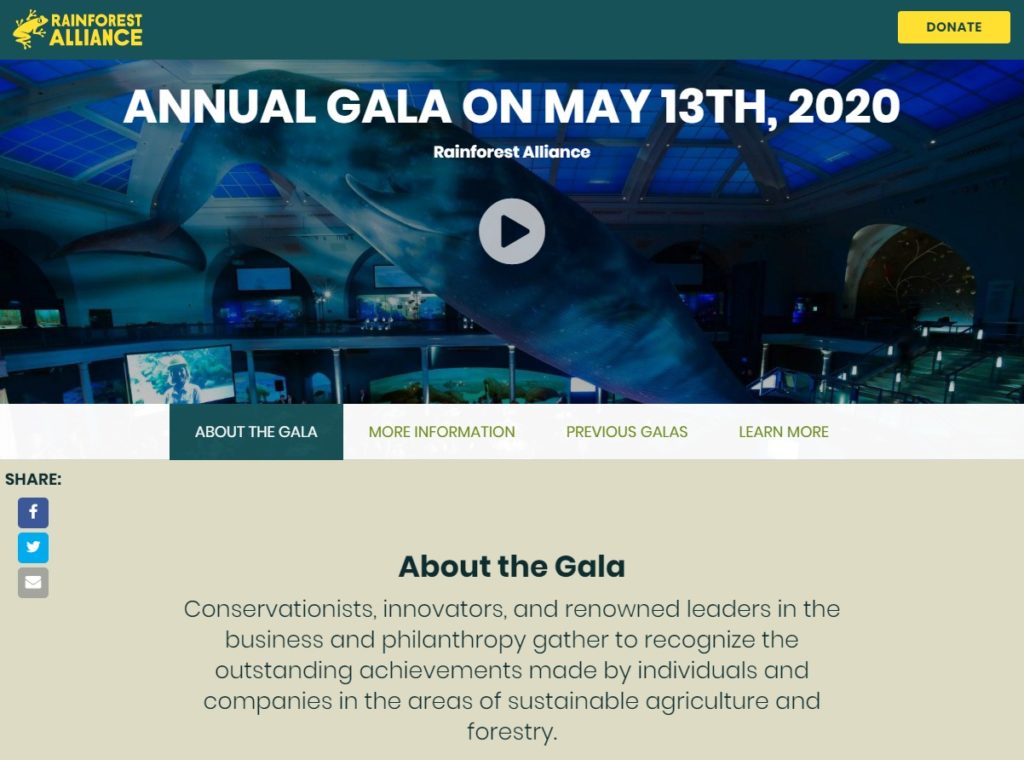
The Land Trust for Tennessee’s Once in a Blue Moon
The heading area sets the stage with the “what” and “when” of the event. The rest of the page includes an overview of the experience, photo gallery, and ticket and sponsorship information.
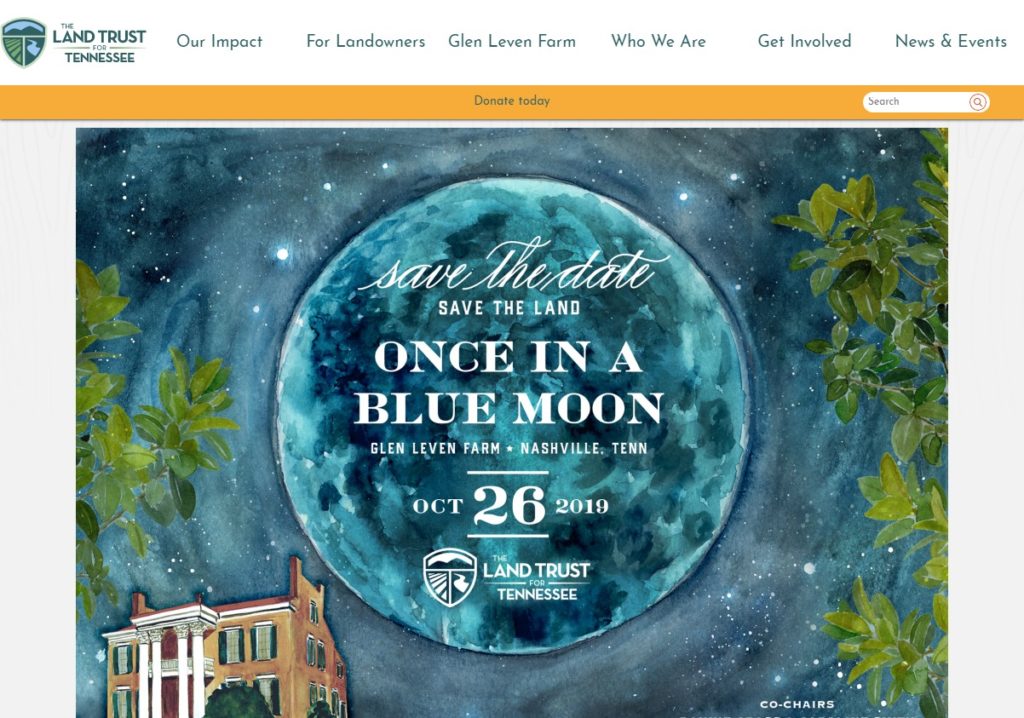
San Antonio Food Bank’s Harvest of Hope
If you need to wrangle a range of sponsor details, here’s an example of how to combine event details and features along with pricing, venue information, a sponsor list with levels, gallery and more.
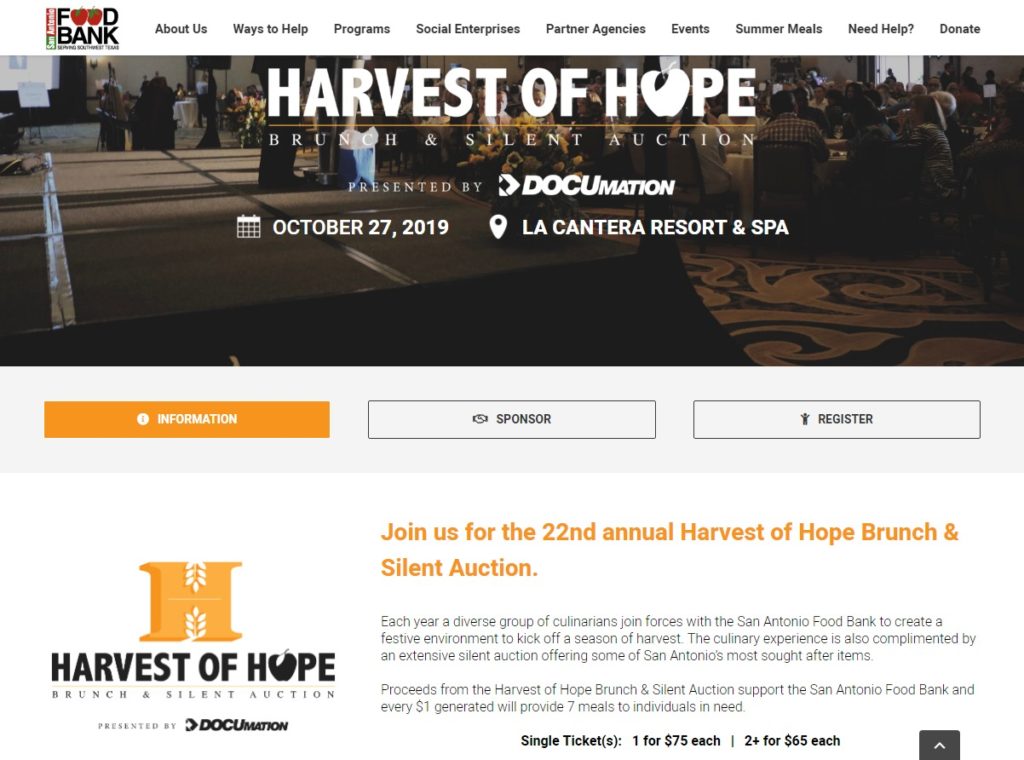
Jewish Family Service’s Heart & Soul Gala
Now that this event is over for 2019, see how to craft thoughtful thank you messages for different audiences as well as recap information like a link to photos on Facebook and videos.
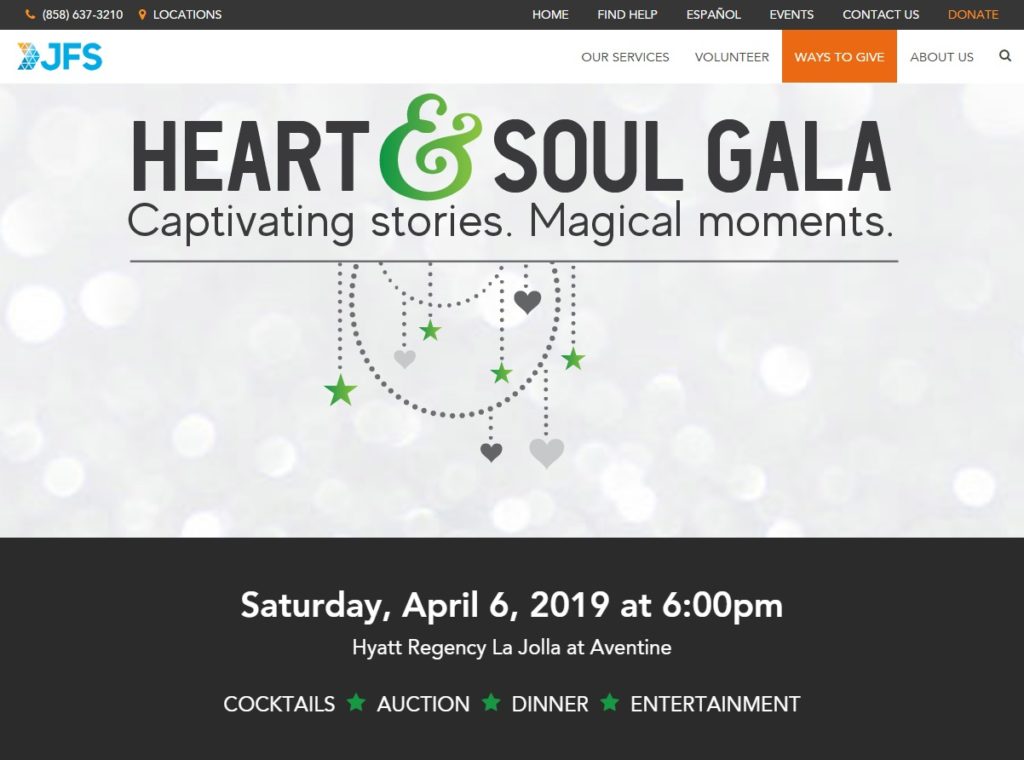
Scholar Demo Site’s Annual Teacher Conference
On the demo site for Scholar, our new theme for the Wired Impact website platform, we created a landing page example for an annual conference with a sample schedule, speakers, pricing, travel details and sponsor logos.
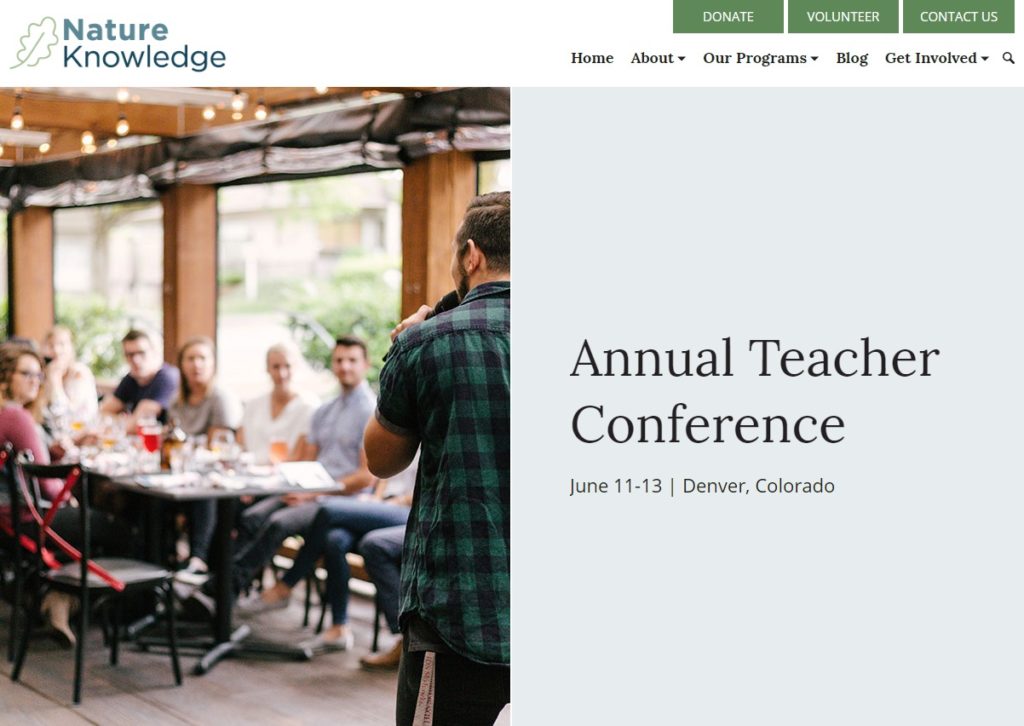
Creating a landing page for your nonprofit’s signature event can motivate past attendees and supporters to return and encourage potential participants to take the next step. With a little strategic planning beforehand—and a handful of content updates after the fact—event landing pages can serve your marketing and your mission.
What else would you include on an event landing page? How does your nonprofit use landing pages to create excitement around big events? Let’s exchange more ideas in the comments.

Comments